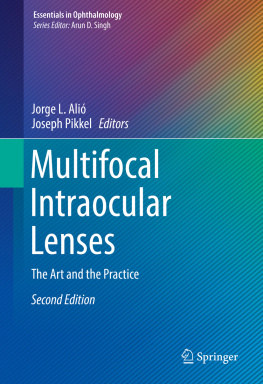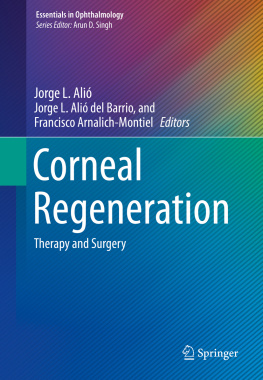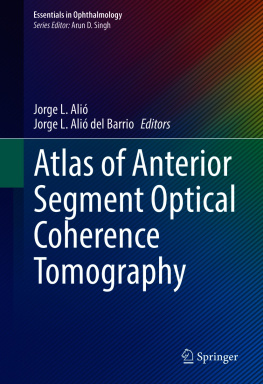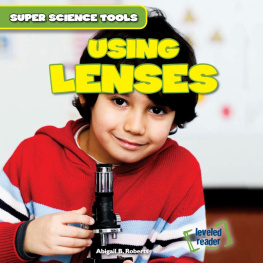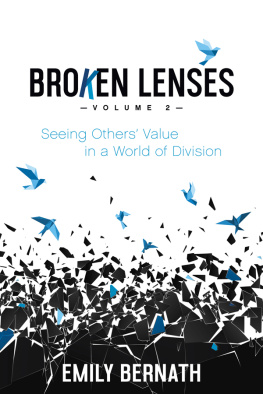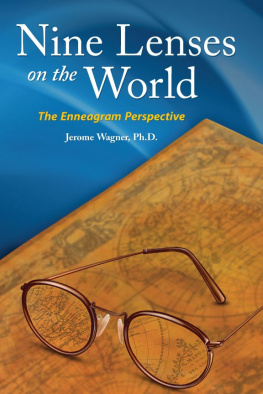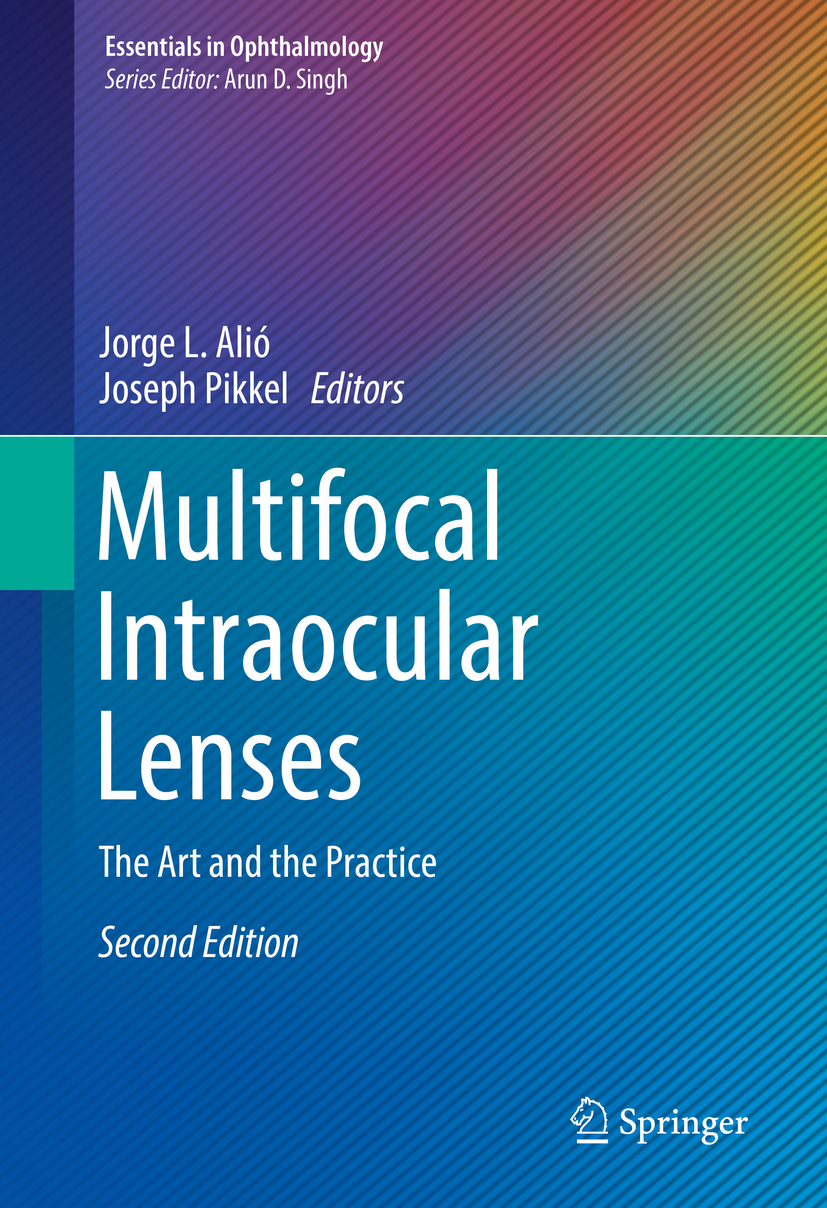Essentials in Ophthalmology
Series Editor
Arun D. Singh
More information about this series at http://www.springer.com/series/5332
Editors
Jorge L. Ali and Joseph Pikkel
Multifocal Intraocular Lenses
The Art and the Practice
2nd ed. 2019
Editors
Jorge L. Ali
Research & Development Department and Department of Cornea Cataract, and Refractive Surgery, VISSUM Corporation and Miguel Hernndez University, Alicante, Spain
Joseph Pikkel
Department of Ophthalmology, Assuta Samson Hospital, Ashdod, Israel
Ben Gurion University, School of Medicine, Beer-Sheva, Israel
ISSN 1612-3212 e-ISSN 2196-890X
Essentials in Ophthalmology
ISBN 978-3-030-21281-0 e-ISBN 978-3-030-21282-7
https://doi.org/10.1007/978-3-030-21282-7
Springer Nature Switzerland AG 2019
This work is subject to copyright. All rights are reserved by the Publisher, whether the whole or part of the material is concerned, specifically the rights of translation, reprinting, reuse of illustrations, recitation, broadcasting, reproduction on microfilms or in any other physical way, and transmission or information storage and retrieval, electronic adaptation, computer software, or by similar or dissimilar methodology now known or hereafter developed.
The use of general descriptive names, registered names, trademarks, service marks, etc. in this publication does not imply, even in the absence of a specific statement, that such names are exempt from the relevant protective laws and regulations and therefore free for general use.
The publisher, the authors, and the editors are safe to assume that the advice and information in this book are believed to be true and accurate at the date of publication. Neither the publisher nor the authors or the editors give a warranty, expressed or implied, with respect to the material contained herein or for any errors or omissions that may have been made. The publisher remains neutral with regard to jurisdictional claims in published maps and institutional affiliations.
This Springer imprint is published by the registered company Springer Nature Switzerland AG
The registered company address is: Gewerbestrasse 11, 6330 Cham, Switzerland
To our dear wives and children who follow us along the routes of medicine, encourage, and support us the reason for all that we do and the joy of our lives, and to our patients from whom we have received the inspiration and expertise to build up the second edition of this book.
Jorge L. Ali and Joseph Pikkel
Alicante (Spain)/Safed (Israel)
Fall 2019
Preface
In our modern world, now on the first quarter of the twenty-first century, medicine faces, more than ever before, the challenge of not only fighting diseases and saving lives but also improving quality of life. While life expectancy rises, patients activities remain at the same level that they were used to being young and hence their visual demands keep being high. While in previous decades older people tended to lessen their activity, nowadays older people do not reduce daily activities as driving, sport activities, and various hobbies that require good visual acuity to different distances and are more convenient if multifocality exists.
This evolution derived among other things new techniques and new approaches of cataract surgery. The evolution of cataract surgery and IOL implantation during the last decade has been, not surprisingly, focused on improving the quality of vision and the quality of life of our patients.
Near vision and intermediate vision have been identified as one of the reasons by which quality of life is really acknowledged by our patients. Another trend in recent years is the tendency to operate younger patients than before with better visual acuities, even with mild cataracts, which means that patients are less tolerant to visual disabilities, and moreover the advances in refractive surgery have educated them in their request for spectacle independence. While usually we succeed in achieving good far vision without spectacles or contact lenses, optimal multifocality for far, intermediate, and near vision is still a challenge to be met.
Since multifocal lenses, by definition, divide light into different foci, using multifocal intraocular lenses causes a dispersion of the energy of light entering into the eye and, consequently, distributing the light in different foci. This causes a change in distribution of light and images at the level of the visual function at the level of the retina. This is the reason why neuroadaptation, which means the capability of the brain to adapt to changes, is necessary to adjust neurophysiology to the changes that are induced in the quality of the retinal image by dispersion of light. Moreover, the overlapping of different foci is neither physiological nor normal in the human or animal evolution. To the best of our knowledge, no visual system is multifocal in nature and it has not existed in the human being throughout evolution. For this reason, neuroprocessing is the main challenge of multifocal intraocular lenses. The new technologies emerging in recent years have aimed at smoothing the changes in visual perception and to make a much more physiological division of light, but even in these conditions, their effectivity has to be demonstrated and confirmed by an improvement in the subjective quality of vision of the patient.
About four years ago we published the first edition of this book which was welcomed by many ophthalmologists around the world. In recent years, a tremendous advance in the field of multifocal intraocular has been made. In this second edition, we bring the updated information on multifocal intraocular lenses techniques and about lenses available in the market today as well as our personal experience on the subject. The main aims of this book are how the practical ophthalmologist and ophthalmic surgeon can select an adequate multifocal intraocular lens, how to differentiate them among the different technologies, how to identify the best on the market, and how to use evidence in favor of the selection of the best for the benefit of the patients.
We hope that the reader will find this book useful for the purpose for which it was created, independent opinion, information, and credibility, and also unbiased information on the subject of multifocal intraocular lenses, which is constantly progressing and takes more and more part in our daily clinical practice. If we achieve this goal, the time and work dedicated to this book will be worthy.
Jorge L. Ali
Joseph Pikkel
Alicante, Spain Ashdod, Israel
Contents
Jorge L. Ali and Joseph Pikkel
Part IHistorical Background and Clinical Indications
Kenneth J. Hoffer and Giacomo Savini
Vicente J. Camps , Juan J. Miret , Mara T. Caballero , David P. Piero and Celia Garca
Jorge L. Ali and Joseph Pikkel
Jorge L. Ali and Joseph Pikkel
Jorge L. Ali and Joseph Pikkel
Jorge L. Ali and Joseph Pikkel
Roberto Fernndez Buenaga and Jorge L. Ali
Maja Bohac , Ante Barisic , Sudi Patel and Nikica Gabric
Richard B. S. Packard

